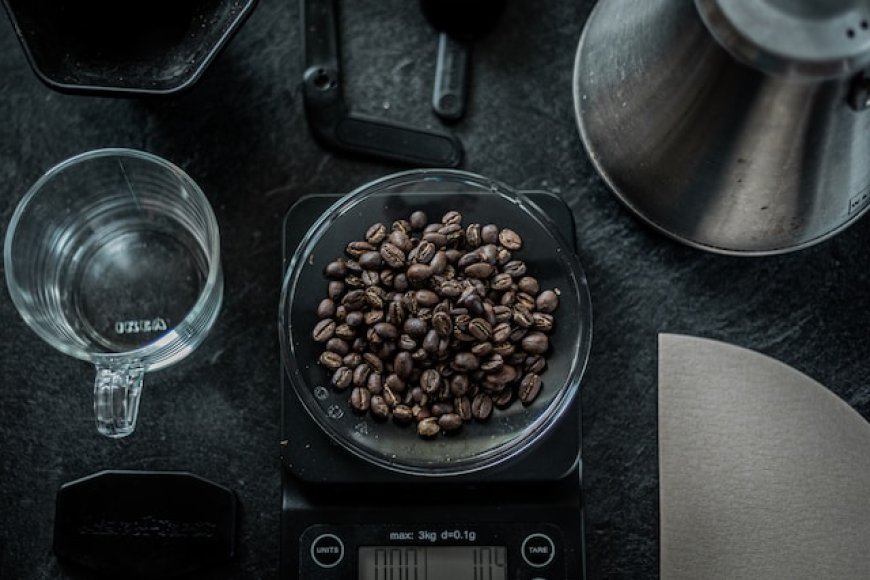Unraveling the Secrets of the Perfect Brew: The Fascinating Science of Your Daily Cup of Coffee
Discover the fascinating science behind brewing the perfect cup of coffee, as we delve into the chemistry and physics of coffee extraction. Find out how to elevate your daily brew to a new level of deliciousness.

Introduction: The Art and Science of Coffee Brewing
There's something magical about the aroma of freshly brewed coffee. For many of us, the daily ritual of brewing coffee is an essential part of our routine. But have you ever wondered about the science behind that perfect cup of coffee? This article explores the chemistry and physics of coffee extraction, providing insights into how you can elevate your daily brew to a new level of deliciousness.
The Chemistry of Coffee: A Complex Mixture of Compounds
Coffee beans are a treasure trove of chemical compounds that contribute to the flavors and aromas we love. Over 1,000 volatile compounds have been identified in coffee, with the most important ones being acids, sugars, and bitter compounds. The brewing process extracts these compounds from the beans and dissolves them in water, creating the complex and flavorful liquid we know as coffee.
Acids
Coffee's acidity plays a crucial role in its overall taste. Some of the main acids in coffee include citric, malic, acetic, and quinic acids. These acids contribute to the bright, fruity, and tangy flavors that are characteristic of certain coffee varieties. The amount and type of acids present in your coffee depends on factors such as the bean's origin, processing method, and roast level.
Sugars
Sugars in coffee are responsible for its natural sweetness. During the roasting process, sugars like sucrose, glucose, and fructose undergo chemical reactions that create new flavor compounds. These reactions, known as caramelization and Maillard reactions, give coffee its delightful caramel, nutty, and chocolatey notes.
Bitter Compounds
Bitterness is an essential part of coffee's flavor profile, balancing out its sweetness and acidity. The primary source of bitterness in coffee is a group of compounds called chlorogenic acid lactones. These compounds are formed during roasting and increase in concentration as the roast level gets darker. Caffeine also contributes to coffee's bitterness, although to a lesser extent than chlorogenic acid lactones.
The Physics of Coffee Extraction: Finding the Perfect Balance
The process of coffee extraction involves dissolving the flavorful compounds from the coffee grounds in water. This process is influenced by several factors, including grind size, water temperature, brew time, and brew method. Striking the right balance between these variables is key to achieving a delicious and well-balanced cup of coffee.
Grind Size
The size of your coffee grounds has a significant impact on extraction. Finer grinds have a larger surface area, allowing for faster extraction. However, if the grind is too fine, you may end up with over-extracted coffee, resulting in a bitter and astringent taste. Conversely, a coarser grind can lead to under-extraction, leaving your coffee tasting sour and watery. Experimenting with different grind sizes can help you find the sweet spot for your preferred brewing method.
Water Temperature
The temperature of the water used for brewing also plays a crucial role in coffee extraction. Most experts agree that the ideal brewing temperature is between 195°F (91°C) and 205°F (96°C). At this temperature range, the water is hot enough to extract the desirable compounds from the coffee grounds but not so hot that it causes over-extraction or burns the coffee.
Brew Time
The length of time that your coffee is in contact with water influences its extraction. Shorter brew times can lead to under-extraction, while longer brew times can result in over-extraction. The optimal brew time will vary depending on the brewing method you're using. For example, a pour-over typically takes 3 to 4 minutes, while a French press requires around 4 to 5 minutes.
Brew Method
Different brewing methods extract coffee in unique ways, leading to distinct flavor profiles. For example, espresso machines use pressure to force hot water through finely ground coffee, resulting in a concentrated and intense shot. On the other hand, pour-over methods rely on gravity to draw water through the coffee grounds, resulting in a cleaner and more delicate cup. Experimenting with various brewing methods can help you discover new flavors and textures in your coffee.
Conclusion: Elevate Your Coffee Experience Through Science
The science behind brewing the perfect cup of coffee is a fascinating blend of chemistry and physics. Understanding these principles can help you fine-tune your brewing process, allowing you to enjoy a more delicious and satisfying coffee experience. So, the next time you prepare your morning brew, remember that there's more to it than meets the eye – or taste buds!
Disclaimer: The image(s) featured in this article are for illustrative purposes only and may not directly depict the specific concepts, situations, or individuals discussed in the content. Their purpose is to enhance the reader's understanding and visual experience. Please do not interpret the images as literal representations of the topics addressed.
What's Your Reaction?













































































































